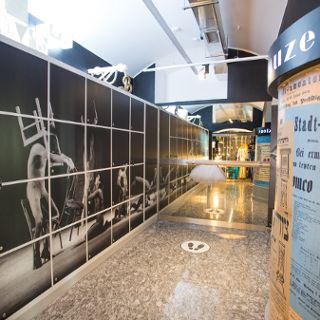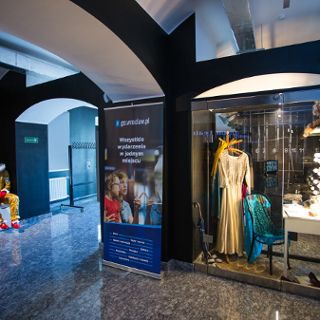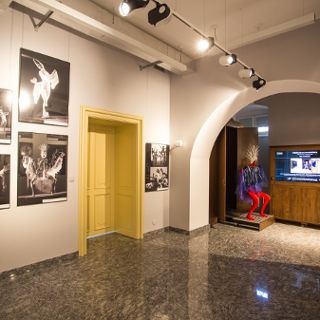Henryk Tomaszewski Theatre Museum in Wrocław
The patron of the first Theatre Museum in Poland is Henryk Tomaszewski. This outstanding actor and director was the founder and many years’ director of the WPT
Tomaszewski’s and Grotowski’s theatres functioning in Wrocław were top world-class brands.
The Theatre Museum is a branch of the Wrocław City Museum.
The new museum tells the story of a pantomime and the entire theatre life of Wrocław through permanent and temporary exhibitions, an elaborate and original educational programme combining theoretical and practical activities, meetings, presentations and workshops that will lift the veil of theatre secrets in an unconventional manner.
The Theatre Museum is situated near the National Forum of Music. Beside the entrance to the building, the remaining part of the southern wing of the royal palace, there is a bronze sculpture based on Theodor von Gosen’s design presenting the face of Orpheus – a mythical singer. The three-storey building (1,307 square metres) contains stories of famous celebrities of the Wrocław theatre.
Henryk Tomaszewski’s apartment
The Museum contains a reproduction of rooms from Henryk Tomaszewski’s apartment with a desk flooded with papers, photographs and books on which he worked before his death. His collections of dolls, toys and devotional items have also found their place.
Tomaszewski did not like multimedia, so his apartment will contain only an old Rubin television – the same as the one that stood in his house.
In Professor Degler’s library
Professor Janusz Degler, a world-famous theatre expert and connoisseur of Witkacy's art, has his own room – which should rather be called a library – in the museum. The professor gave the museum his collection of books on theatre, which encompasses 4,000 volumes. Along with literature collected by the Museum, this collection forms a unique specialised library – one of the biggest libraries devoted to Polish theatre.
The collection will consist of Polish and foreign encyclopedias and theatre dictionaries, source editions, compendiums of the history and theory of theatre, syntheses of types of theatre, and books on the art of acting, stage design and theatre architecture. Professor Degler gave the museum also a collection of postcards presenting theatre buildings from various parts of the world.
In Stefan Arczyński’s atelier
Another artist who has his own studio in the Theatre Museum is Stefan Arczyński, the oldest Polish photographer, who has devoted many of his works to pantomime. In one of the rooms, you can watch his photographs and look into an analogue darkroom with original equipment – an enlarger and photo processing trays.
In the biggest room with a magnificent panel plafond and a glazed arcade wall opening on Plac Wolności square, there will be an exhibition devoted to Wrocław theatre after 1945. In the over 7 m high room we will watch exhibits collected by the City Museum since the 1970s, which will be supplemented by a special projection. It can also be seen from the outside, from Plac Wolności square.
Mirosław Oczkoś’s Workshop of Mouth Sounds
A small place – a multimedia stand devoted to diction – is situated on the second floor. On a specially designed desk, you can play with tongue twisters, check your own diction, listen to masters of Polish language or send your own electronic audio postcard or upload a recording onto a social media website by means of an application.
The author and keeper of the workshop is Mirosław Oczkoś - the best diction teacher in Poland, an actor, a film and TV director.
Behind the scenes
In the museum you can see how a stage manager’s console works, take a commemorative photo of yourself in a stage costume and upload it on a social media website. It will also contain a lifting device and a place where theatre superstitions are collected. We will sit at Igor Przegrodzki’s original dressing table to see him preparing for the role of King Lear in a mirror. On the last floor, there is a theatre room where performances and workshops can be held.
Toilets are also designed in theatre style – they contain quotations of famous writers, publicists, actors and directors devoted to theatre. You can see a foretaste of this already on the wall in front of the entrance: ‘I know only two types of audience: the one that coughs and the one that does not cough’ (Artur Schnabel); ‘An eunuch and a critic are two of a kind; they both know how, but no one can do it’ (Tadeusz Boy-Żeleński).














